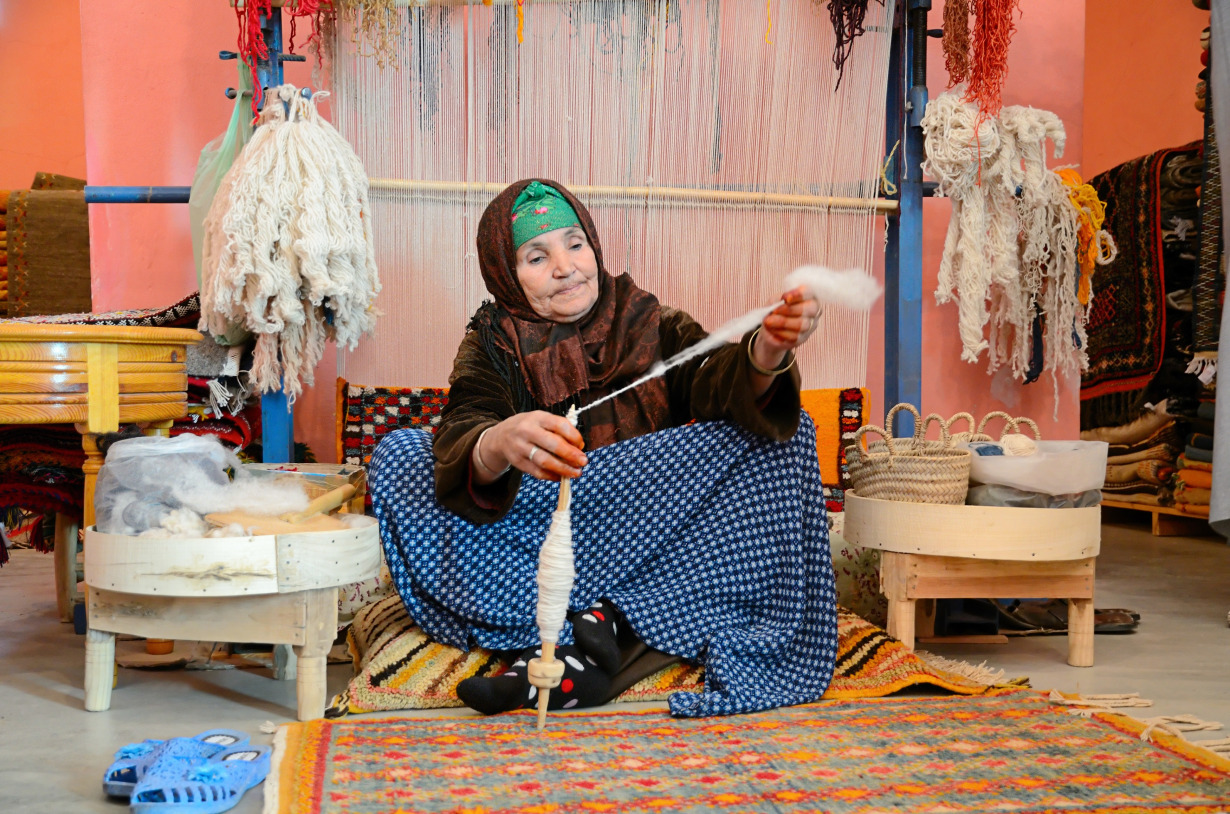
Most people think elaborate work demands the interference of machinery but the Amazigh women say otherwise. Although the history of rug making in Morocco dates back long ago, the process has not changed a bit despite the intervention of modernization as a whole throughout Morocco. The artisan women craft handwoven rugs in the same way for thousands of years entirely by hand, one knot at a time. A process in which patience, technique, and creativity are put together to deliver a final finished rug with high-quality output. Every Amazigh hand-knotted rug has to go through an immense process that requires gathering, preparing, and weaving. They are as follows:
Inspiration
The inspiration behind creating a product itself is quite interesting as it keeps on changing from time to time, especially with Moroccan Amazigh rugs. The art of handweaving began as a need for Amazigh tribes to defy the harsh environment and bring warmth into their homes, only to evolve into becoming a one-of-a-kind decorative art that is desired from home to home. As for the local artisans and designs, they get their inspiration from various factors, from nature, and superstition, to the fertility of the land.
Gathering and Preparing Materials

When it is all finely done, a marvel of beauty rises featuring a thick or flat piece of textile that is coated with soothing colors, traditional motifs, and tribal characters. All of which with individual character, gorgeously simple designs, and an exceedingly cozy feeling thanks to the skilled women of the High Atlas mountains.
Even though some of the methods and techniques involved in weaving a handmade rug may differ from region to region in Morocco and even from one country to another, the principles of rug-making are practically the same throughout the world. Still, a simple understanding of an authentic handmade rug's production can be super valuable before buying one.




